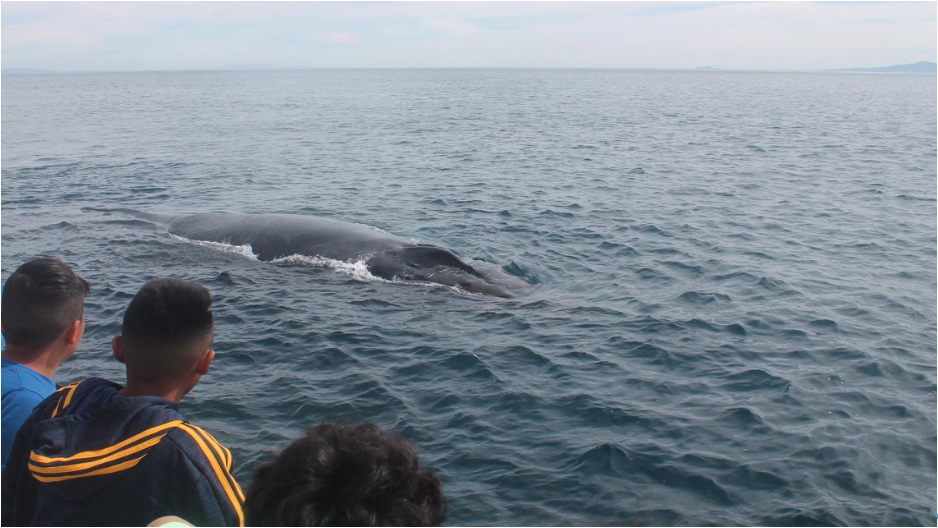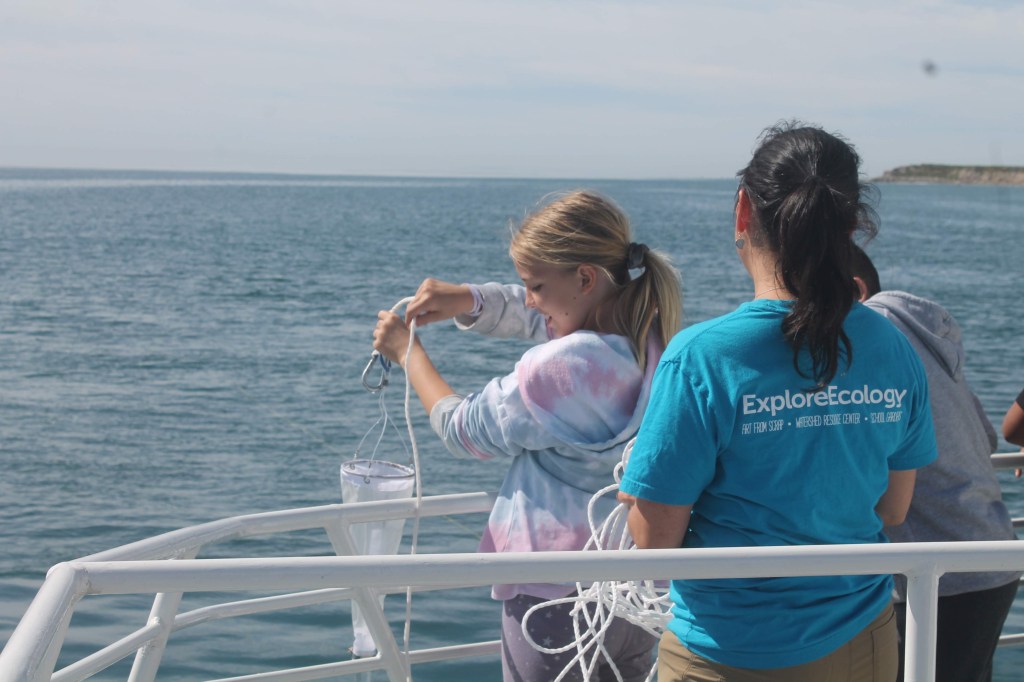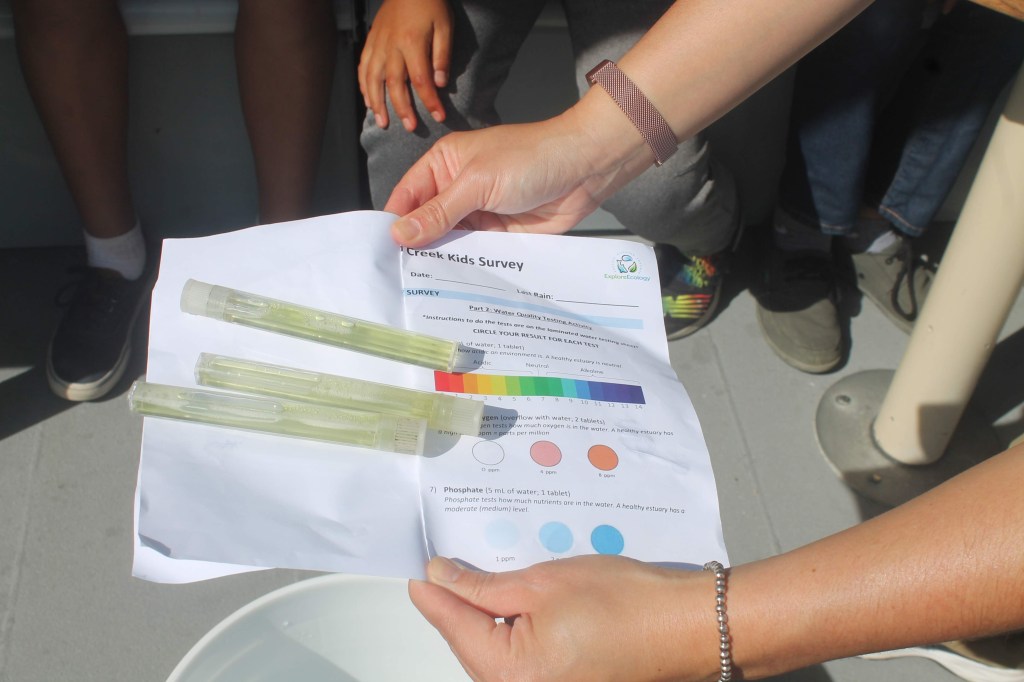Hands-On Learning in the Santa Barbara Channel
Explore Ecology and the ‘Condor Express’ Teach Water and Sea-Life Lessons

About 18 classes of schoolkids from Carpinteria to Goleta have boarded the Condor Express in a hands-on learning experience this school year about junk in the ocean. Their sponsor, Explore Ecology, invited the Santa Barbara Independent to meet 5th and 6th graders from El Camino Elementary on one of the last immersive boat trips through the Santa Barbara Channel.
“We visit them in the classroom, and then they come visit us at Hendry’s Beach for a field trip,” explained Jenny Davis, the education coordinator at Explore Ecology. “They test the water quality, and then we go back to the classroom where we talk about marine debris, water pollution, and why it’s important that we reduce our impact on the environment.” The classes end in the boat trip, to “pull everything together and really bring everything back to the idea of hands-on, why does this matter, and how does it apply to the real world,” Davis said.

The educational journey one Friday in February started from the Sea Landing in the Santa Barbara Harbor and motored the students off Hendry’s Beach, where they tested the ocean water pH and phosphorous levels. The class had previously done water tests on land, and this gave them the firsthand opportunity to connect the implications of what they did onshore with the marine life offshore. Lessons, field experiences, and beach cleanups are part of Explore Ecology’s Flows to the Ocean program, which are funded in part by a National Oceanic and Atmospheric Administration Bay Watershed Education and Training grant.
The ship next stopped at Goleta Bay for a series of lessons about the types of mammals in the channel, measuring turbidity of the water and performing plankton net tows. Students rotated through sessions and were able to perform the tests and plankton tow themselves. They scooped water and then viewed the plankton from microscopic imagery. During the mammal lesson, instructor Alex Bereda held up a deflated balloon to the students. He told the students that the captain had found 22 balloons in the ocean in the month of November. The discussion turned to why debris like these are harmful for species like turtles and dolphins.

“My favorite moments are when I see a student’s mind change about something,” said environmental educator Julia Keane, “when where they realize this is a problem they have the power to change.”
On the return to Santa Barbara Harbor, the Condor Express first pointed its bow farther off the coast for a chance to see the marine life the students were studying. It was an exceptional day. A pod of around 100 common dolphins swam alongside the boat, and two humpback whales surfaced. The whales played with the boat, diving under and resurfacing on each side for about 20 minutes. The students ran from side to side on deck with excitement, shouting each time the whales dove. Explore Ecology’s staffers were amazed at their luck, saying it was the best day for whale watching they’d had so far.
The 5th and 6th graders were fascinated along the entire journey, faces lighting up each time a whale surfaced or a dolphin sprang out of the water. The lessons learned in the classroom became tangible during the trip, as the abstract idea of protecting marine life turned into a young life experience.




You must be logged in to post a comment.